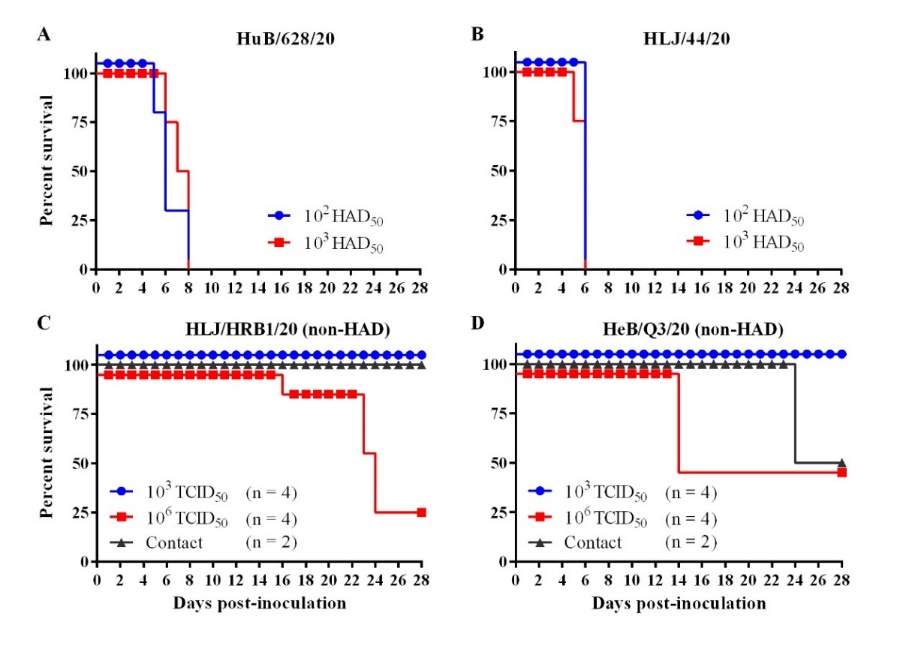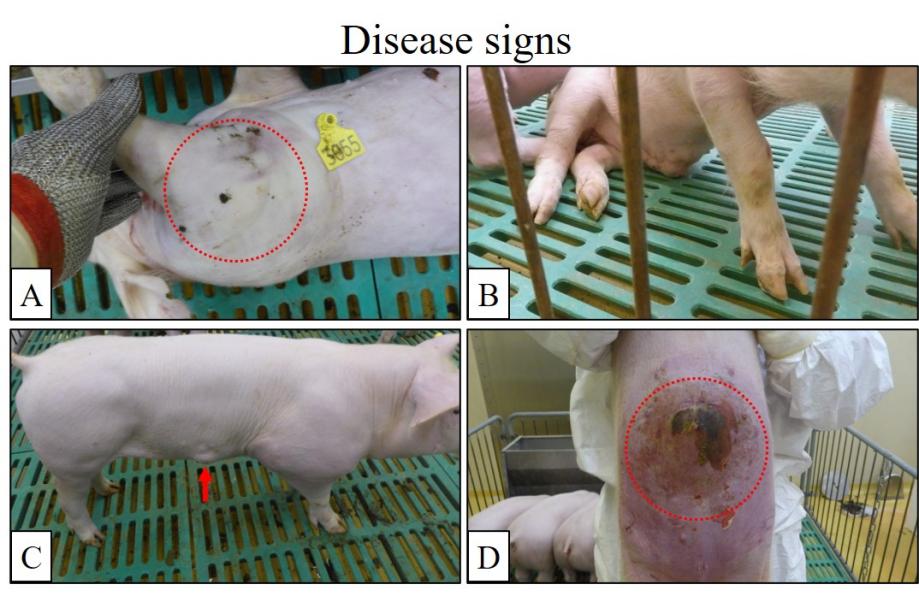Recently, Harbin Veterinary Research Institute (HVRI) of Chinese Academy of Agricultural Sciences (CAAS), revealed that lower virulent African swine fever viruses withstrong transmission capacity emerged in China.
African swine fever (ASF) is a devastating hemorrhagic disease that affects both domestic pigs and wild boar,which causes severe economic losses to the pig industry and threatens global food security. Until now, African swine fever virus (ASFV) has been circulating in China for more than two years, and it is not clear whether the biological properties of the virus have changed. In this study, we reported on our surveillance of ASFVs in seven provinces of China, from June to December, 2020. A total of 22 viruses were isolated and characterized as genotype II ASFVs, with mutations, deletions, insertions, or short-fragment replacement occurring in all isolates compared with Pig/HLJ/2018 (HLJ/18), the earliest isolate in China. Eleven isolates had four different types of natural mutations or deletion in the EP402R gene and displayed a non-hemadsorbing (non-HAD) phenotype. Four isolates were tested for virulence in pigs; two were found to be as highly lethal as HLJ/18. However, two non-HAD isolates showed lower virulence but were highly transmissible; infection with 106TCID50dose was partially lethal and caused acute or sub-acute disease, whereas 103TCID50dose caused non-lethal, sub-acute or chronic disease, and persistent infection. The emergence of lower virulent natural mutants brings greater difficulty to the early diagnosis of ASF and creates new challenges for ASFV control.

Figure 1 Lethality of field ASFV isolates in pigs. To determine the virulence of ASFVs in pigs, groups of four SPF pigs were inoculated with 102and 103HAD50of HuB/628/20 and HLJ/44/20, respectively (A and B). Groups of four pigs were inoculated with 103and 106TCID50of HLJ/HRB1/20 and HeB/Q3/20 viruses, respectively (C and D). Two naive pigs were cohoused with the pigs inoculated with the 106TCID50dose HLJ/HRB1/20 and HeB/Q3/20 viruses from the first day of inoculation, respectively. The pigs were monitored daily for disease signs and survival.

Figure 2 Disease signs and gross lesions in HLJ/HRB1/20-infected pigs. Disease signs include arthroncus (A), paralysis (B), phyma (C), and cutaneous necrosis (D) in surviving pigs.
The studywas published in “SCIENCE CHINA Life Sciences”.This study was supported by the National Key Research and Development Program of China (2018YFC1200601), Applied Technology Research and Development Project of Heilongjiang Province (GA19B301), Key-Area Research and Development Program of Guangdong Province (2019B020211004), the State Key Laboratory of Veterinary Biotechnology Program (SKLVBP201801), and the National Natural Science Foundation of China (31941002). More details are available on the link below: https://engine.scichina.com/publisher/scp/journal/SCLS/doi/10.1007/s11427-021-1904-4?slug=fulltext.
By Zhao Dongming(zhaodongming@caas.cn)
|
